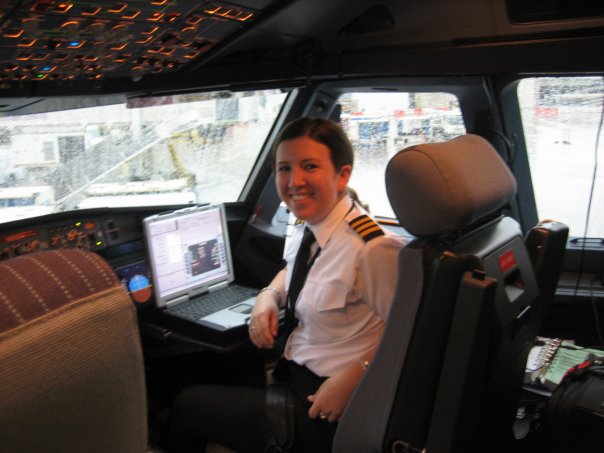"Hi there, we're with the FAA!"
The most dreaded words in existance.
I will, up front, say that I have had no true negative experiences with the FAA. At most they've been nuisances. Like ramp checks! You'll have one, at some point. It's inevitable, like the one time you don't check for traffic before taking the runway, someone's going to land on top of you.
Ramp checks do serve a useful purpose. They allow the FAA to do random spot checks of pilots and aircraft to ensure that everyone's playing by the right rules. Deep down inside, I'm happy about these checks and balances that result in safer flying for everyone.
Still doesn't stop your stomach from dropping down to your feet, though.
I was ramp checked once before, in Nassau, while I was flying for Spirit. No big deal, we had everything in order and then managed to convince him to sit in the back and check over the flight attendants manuals instead of taking the jumpseat. I'm pretty meticulous about my logbook and licenses anyways, so there's really nothing I usually have to worry about.
Here's a little bit about Ramp Checks 101:
The first thing the FAA is going to check is your personal information. Your license(s) and medical need to be in order, since these have to be on your person at all times. Your logbook only has to be "accessible," which means at home, not in Antarctica.
Next they'll move on to the airplane. This is why, ladies and gents, ARROW is such an important acronym. I'll be the first to admit that if I'm flying the same plane over and over again on a regular basis, I may not check ARROW every time. I'm horrible, I know. I learned my lesson today, youbetcha. Because nothing feels worse than "oh, wow, I hope that's in there."
ARROW = all the documents that must be on an airplane every single flight: airworthiness certificate, registration, the aircraft's operating handbook and the weight and balance. The other R comes from your restricted radiotelephone operator's license, which you have to have if you're flying international. I have one, but wasn't requested to provide it.
Next they're going to check around the airplane, make sure no parts are falling off, and making sure you have all the instruments required for the operation you were performing/are going to perform. The requirements differ if you're operating under Visual Flight Rules (VFR) during the day or at night, or Instrument Flight Rules (IFR). This is another thing that I don't think most of us check every time we go flying if we've been in the same plane recently. And we really should!
The most important thing you need to remember is to be nice! Nothing will get you a ramp check that is more like a *ahem* very private physical if you're rude to the FAA. Smile, answer their questions, and besides that, shut the heck up. Most people tend to ramble when their nervous. As a pilot you learn to NEVER DO THIS. Next thing you know you're talking about the different types of Class E airspace and VFR cloud clearances. After all, they're not doing this (hopefully) because of some sadistic desire to see you sweat. They're trying to keep everyone safe.
AOPA has written a nice article on what the FAA can and cannot check, as well as the actions both you and they can take: "Pilot Information Center: Ramp Checks"
Subscribe to:
Post Comments (Atom)

No comments:
Post a Comment